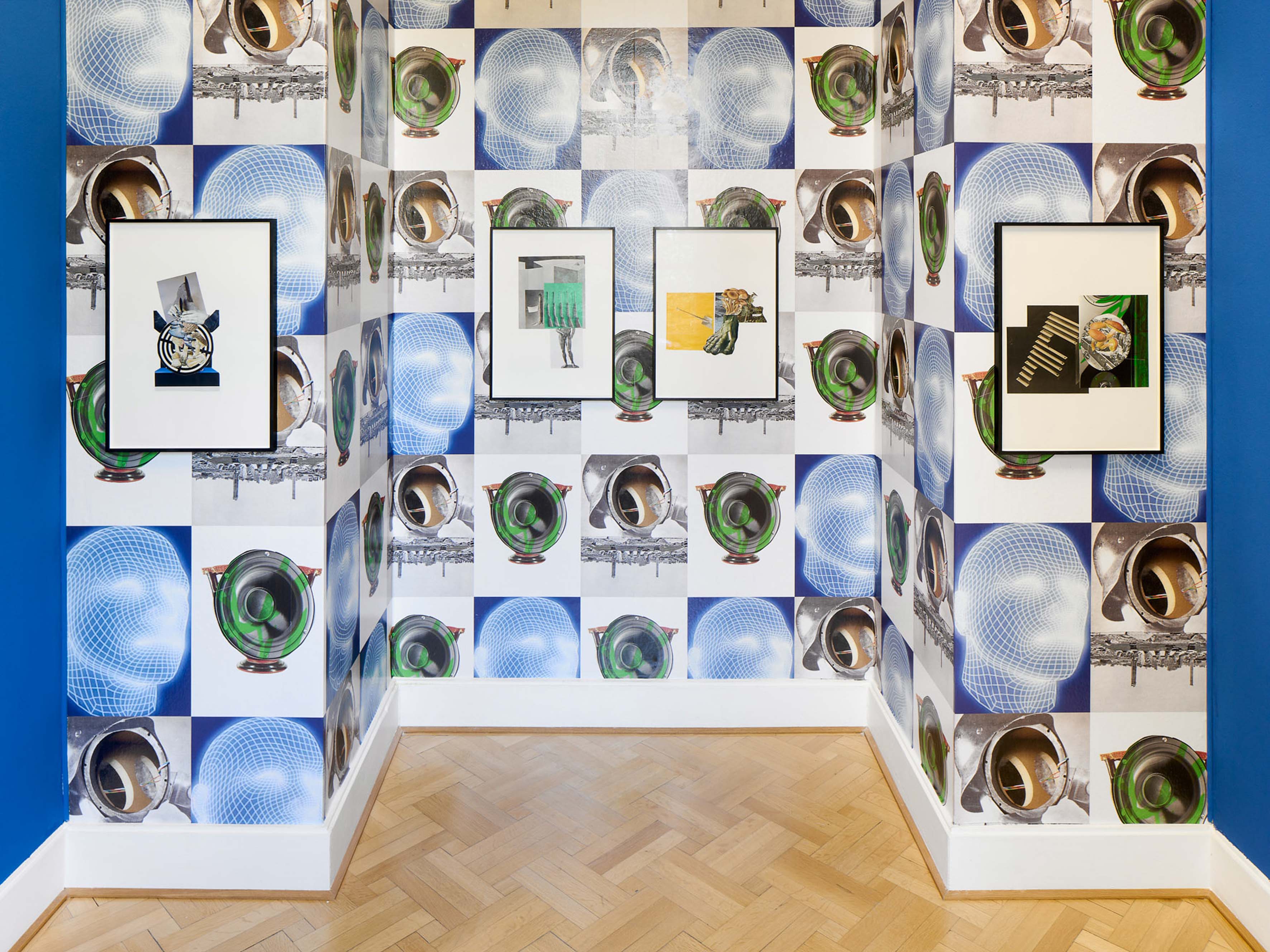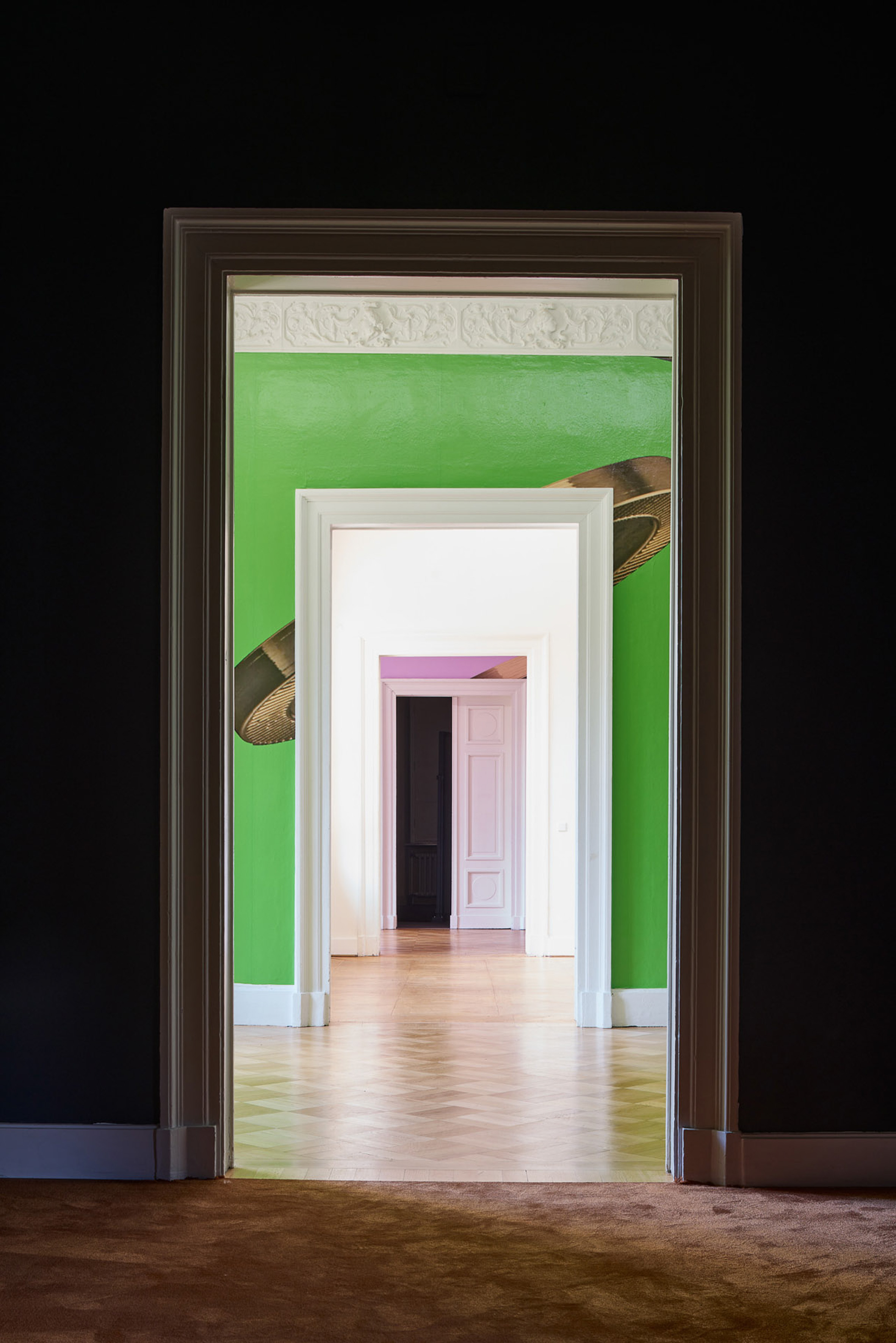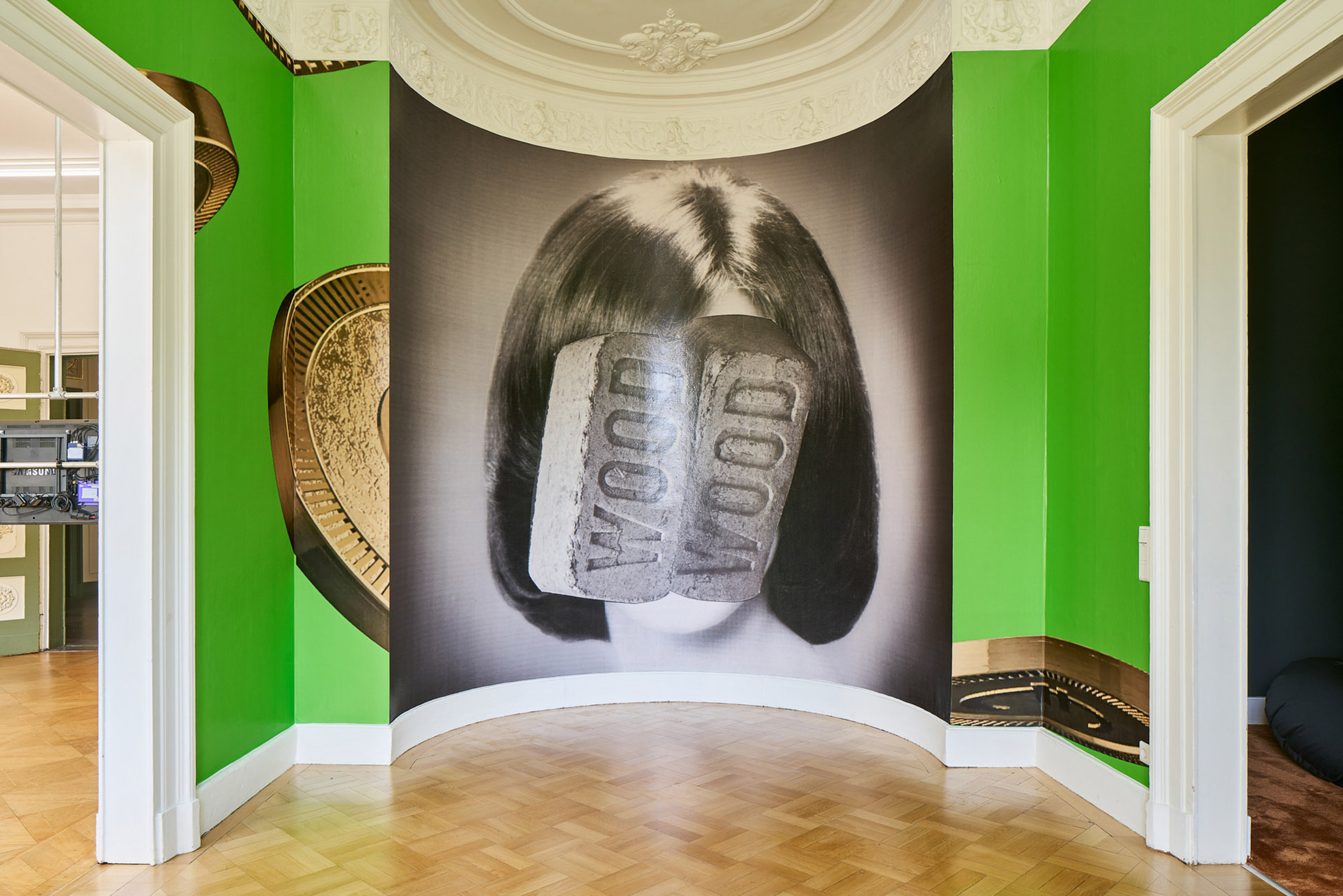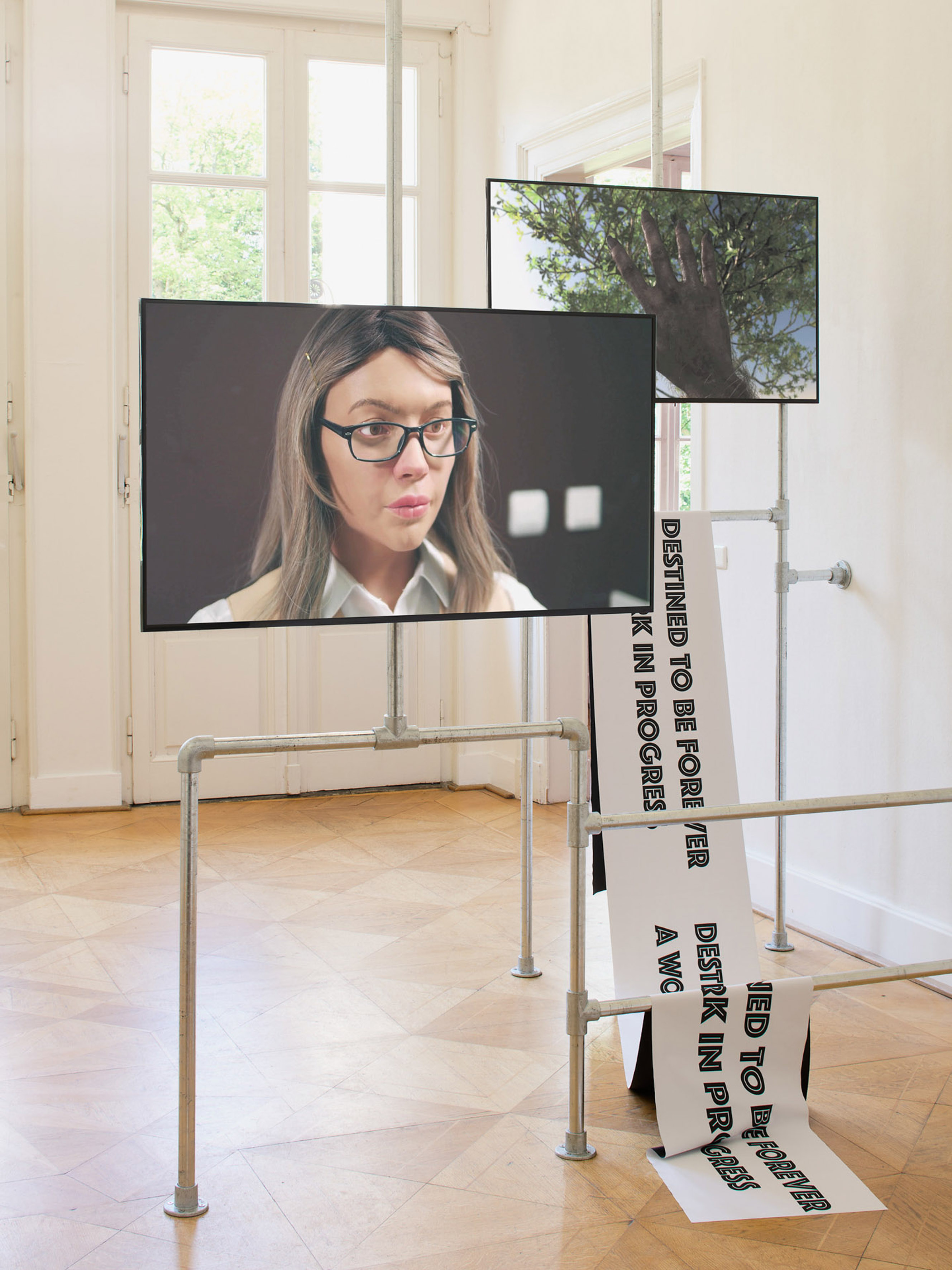YYYYMMDD >>> BACK HOME <<< >>> SELECTED FEATURES <<< >>> HIDDEN ARCHIVE <<<
[20220803]
THE BODY IS THE HOUSE, THE HOUSE IS BUT HAUNTED by ELI CORTIÑAS at KUNSTVEREIN BRAUNSCHWEIG curated by NUNO DE BRITO ROCHA and BENEDIKT JOHANNES SEERIEDER [from 20220702 to 20221002]
[Photos: Joe Clark]


















Eli Cortiñas’ artistic practice traverses contemporary and historical visual cultures, which she dissects using montage and collage, displacing limiting attributions and creating space for feminist and decolonial narratives. Kunstverein Braunschweig is hosting the artist’s first institutional solo exhibition in Germany. The Body is The House, The House is But Haunted brings together key works, as well as installations created especially for Villa Salve Hospes.
The villa’s ground floor is flooded with a multitude of images in a variety of forms: videos, video installations, posters, paper collages, spatial installations – often all at the same time. After a while, the images on the walls start appearing in the videos – or vice versa – and the posters in one room start resembling the images in the next one or the one after that. Eli Cortiñas thereby connects all the exhibition spaces of Kunstverein Braunschweig, turning the visitors into the consumers, producers, subjects, and objects of this world of images. Eli Cortiñas uses various and heterogeneous sources to create her video and spatial installations. Her starting material are those images that constantly surround us today and that are no longer connected to any specific medium. Cortiñas’ artistic exploration thus begins in the dazzling flood of images which confronts us on a daily basis.
The exhibition includes images on screens, photo wallpapers, framed collages, , digital prints, and posters. The artist reassembles them from the Internet, as well as from historical films and commercial graphics, creating digital and analog collages, combining film snippet into video clips and transforming film stills into digital prints. These pictorial multiplicities are converted into room-filling installations that produce a rhythmic urgency through motivic density, re-iteration, repetition, and transposition.
These methods gradually reveal specific patterns which are often inherent in the images themselves. Juxtaposing what seems disparate, drawing parallels and uncovering commonalities, Cortiñas lays bare traditional conventions of representation and identifies surprisingly rigid narrative patterns.
Special attention is paid to representations of femininity. Focusing on the agency of female protagonists in historical films and current TV series, she reveals how stereotyped these pictorial conceptions are: even today female film characters are given scripts reminiscent of narrative conventions from the 1950s.
Cortiñas thus reveals continuities rather than ruptures. Her work not only revolves around the visual representation of female identity, but always considers it in relation to class, education, ethnicity, age, mobility, and a wide range of other intersections. Her artful montages succeed in bringing this transhistorical nonground to the surface, the beauty of the emerging videos and installations always complemente by analytical poignancy, poetic thoughtfulness, and feminist passion.
Her rigorous artistic analysis ultimately extends to a future that has already begun: in Cortiñas’ oeuvre the questioning of advanced technologies occupies a special place, especially of those that are given a feminine appearance. Through Hollywood cinema, but also through actual scientific progress, cyborgs and androids have entered our lives and speak to us – yet these artificial beings almost always have soft, high- pitched voices, smooth and bright faces, their bodies mimicking normative female forms.
Cortiñas’ investigation repeatedly returns to media representations of such feminized technologies. It becomes clear that she is not depicting a utopian vision of the future, but rather our present. Using historical imagery, the artist demonstrates that this specific conflation of artificial intelligence, machine beings, and femininity in fact originates in Western visual cultures of the 20th century, whose repertoire of images and ideas is pervaded by sexist and racist stereotypes.
Eli Cortiñas’ montages and collages do not contribute to the glaring noise of these images, creating moments of pause and reflection at the intersections of present, past, and future. In this respect, Cortiñas’ tirelessness may be construed as feminist care work – a care work for a freer future, which breaks with constricting imaginaries and creates spaces for new narratives.
Eli Cortiñas was born in Las Palmas de Gran Canaria and lives and works in Berlin. From 2019 to 2022, she shared a professorship with artist Candice Breitz at HBK Braunschweigand has recently been appointed Professor of Media Art at HGB Leipzig. She studied at the Academy of Media Arts in Cologne and at the European Film College in Ebeltoft, Denmark. She has received numerous grants and residencies such as the Villa Massimo in Rome, Italy, the Karl Schmidt- Rottluff or the Fundación Botín Scholarship and has been represented in several group exhibitions and film festivals, including 6th Ural Biennial Ekaterinburg (2021), Rendering Refusal, Transmediale, Berlin (2021), Resistant Faces, Pinakothek der Moderne, Munich (2020), Maske. Kunst der Verwandlung, Kunstmuseum Bonn (2019), Riga Biennial of Contemporary Art, Riga (2018), Prospectif Cinéma, Centre Pompidou, Paris (2016). She has also had numerous solo exhibitions, including Always Bite the Hand That Feeds You, Convent Contemporary Art Space, Ghent (2019), Remixers Never Die, Contemporary Art Center Vilnius (2018), What About Some Tropical Delights in Neoliberal Times?, Centro de Arte Atlantico Moderno/La Regenta, Las Palmas (2015), Partial Nudity, Kunsthalle Budapest (2013).
[Text: Nuno de Brito Rocha and Benedikt Johannes Seerieder]
©YYYYMMDD All content and design by Daniela Grabosch + Ricardo Almeida Roque unless otherwise stated. Images, Videos and Texts can only be used under permission of the author(s).